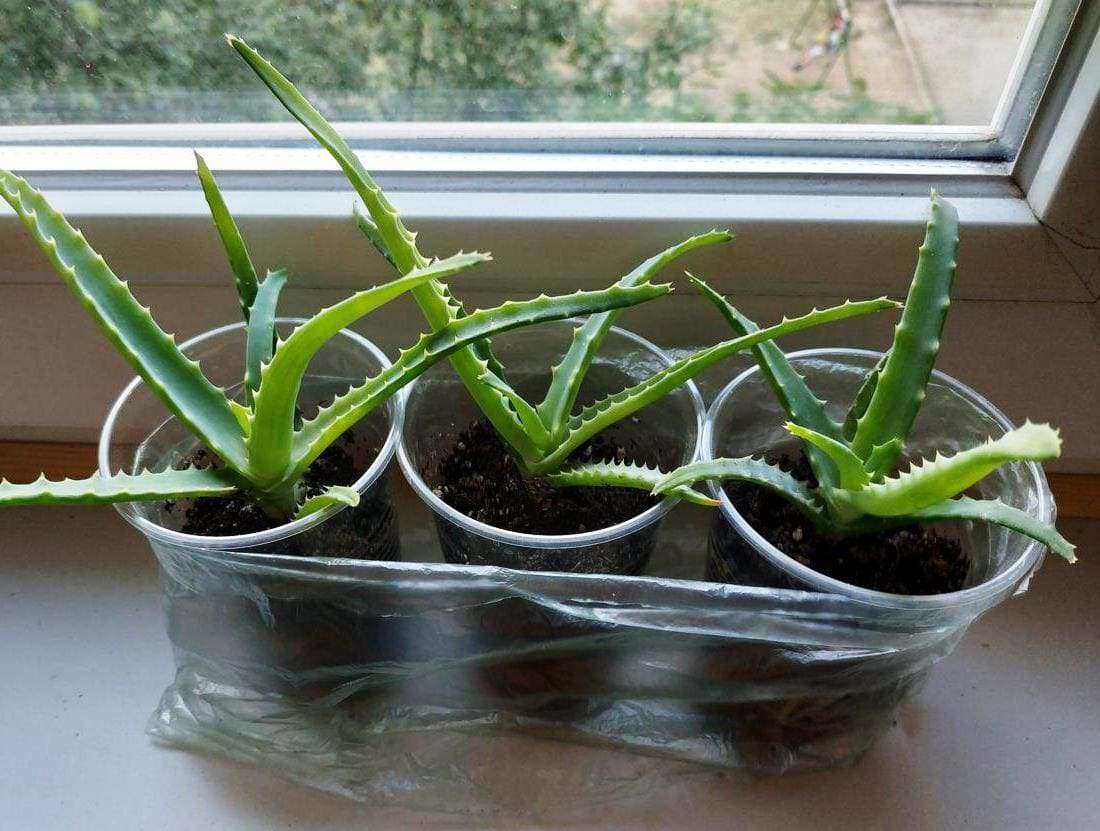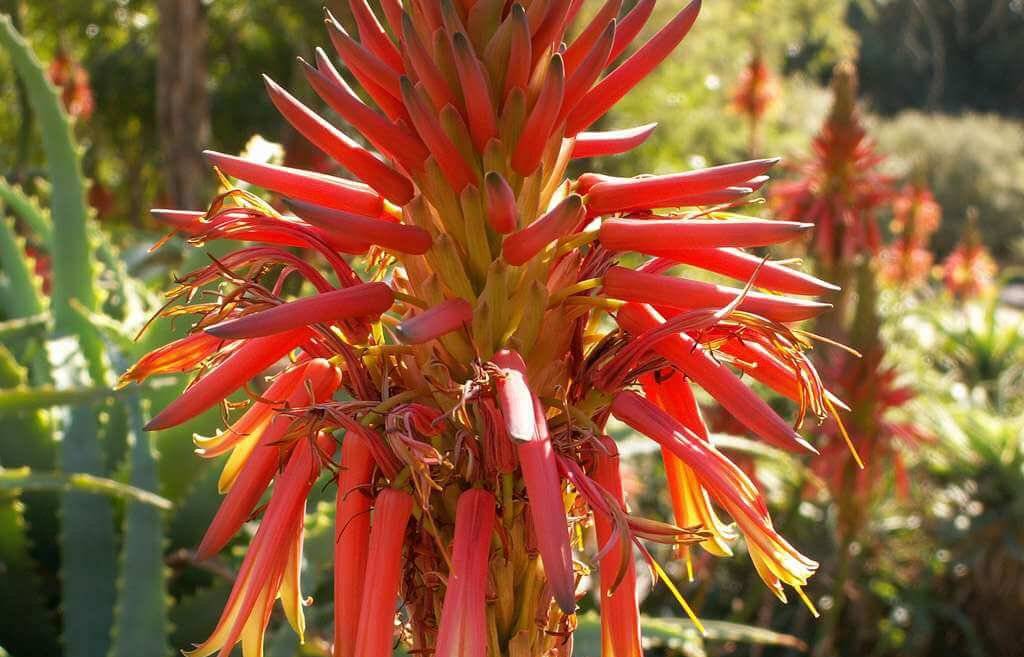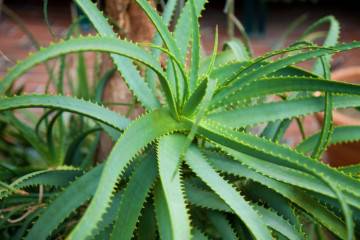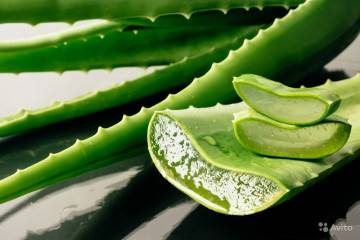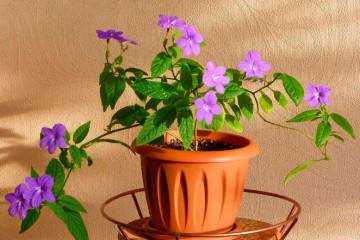Aloe tree - what is it, description of the plant
Content:
Aloe Arborescent is a perennial evergreen flower. Some call it a home doctor because it is actively used in the treatment of various problems.
General characteristics
Aloe is a herbaceous plant from the Ksantorreev family. In reference books, it is referred to as Aloe arborescens. It belongs to the species of evergreen perennials. Widespread in the tropics.
The stem of the plant is straight. Elongated leaves with sharp teeth at the edges extend from it. In natural conditions, it blooms annually. Inflorescences are formed from numerous flowers in the form of red or yellow bells.
After flowering, capsules are formed, filled with a large number of seeds. At home, scarlet plants rarely reach 1 meter. Peduncles are extremely rare, the boxes do not ripen.
Medicinal properties
Aloe Arborescens has medicinal properties. It has found its application in medicine and folk methods of treatment. Fresh juice is used for the preparation of medicines. It is also thickened to obtain a powder.
The description of aloe contains information that it contains a large amount of vitamins, enzymes, phytoncides, essential oils, organic acids. It contains vitamins C, E, B, beta-carotene.
The flower sap has a bactericidal and anti-inflammatory effect. It is used to combat staphylococcus, streptococcus, dysentery, diphtheria sticks. Anthraquinone is responsible for the laxative effect of the agave. Zinc and selenium are responsible for the choleretic effect.
According to its characteristics, aloe has moisturizing properties. It is actively used in cosmetic products.
According to folk recipes, aloe is used to make means for treating constipation, improving digestion, and preparing compresses for skin diseases and burns.
Contraindications
Despite its medicinal properties and wide range of applications, aloe has a number of contraindications.
Its use is not recommended for such diseases and conditions:
- hypertension;
- pregnancy;
- stomach bleeding;
- age up to 3 years;
- diseases of the kidneys, heart, liver;
- acute infectious diseases.
Care features
Knowing the rules of caring for tree-like aloe at home avoids most common problems.
- Temperature. The optimal regime in the summer is from 20 to 25 degrees. In winter, aloe is kept in a room where the temperature is from 15 to 20 degrees.
- Lighting. The centenary grows well on a lighted windowsill. The south or west side will suit him.
- Watering. In summer, watering is carried out no more than 1 time a week. In winter, a period of dormancy begins. Growth is slowing down. Watering is carried out once every two weeks. Water is used only at room temperature.
- Top dressing. Complex mineral fertilizers are used for feeding. Top dressing is carried out once a month from April to October.
- Pruning and replanting. Aloe is transplanted as needed. The basis for transplanting is a small pot or if the stem of the aloe is bare from below. Young plants change the soil every year. In adults, every 2-3 years.When transplanting, the grown basal processes are planted. The transhipment method is used for transplanting.
Reproduction
Aloe belongs to the category of easily propagated plants. For breeding, cuttings, leaf rooting, basal processes are used.
Cuttings
Cutting is one of the most popular methods. Lateral shoots are chosen as cuttings. When the lower leaf plates are cut off and the trunk is very bare, the tip is used.
The main requirement is that the cuttings must be completely healthy. The success of the procedure depends on which cuttings are selected. The cut is made with a sharp disinfected knife. The stalk is left to dry for 1-2 hours in a dark room. After that, it is buried in the previously prepared soil by 15 centimeters.
For planting, use a small container. The bottom is filled with drainage, on top of which nutrient soil is poured and lightly tamped. After planting, the cutting is watered abundantly. The seedling takes root within 2-3 weeks. During this period, he is kept on a shaded windowsill.
Rooting a leaf
When breeding by leaf rooting, the main requirement is the choice of high-quality planting material. The leaf is chosen healthy, without external damage. The cut is made with a sharp disinfected knife. The place of the cut is sprinkled with crushed wood ash or coal.
The cut sheet is planted in a previously prepared container and covered with a film. To speed up the process of engraftment and root formation allows watering with stimulants of root formation.
Seeds
The seed breeding method is the most laborious and time consuming. Planting material is purchased in specialized stores or collected after an adult aloe tree has bloomed. Sowing is carried out in previously prepared and disinfected soil. Winter time is chosen for planting. The seeds are deepened by no more than 1 centimeter.
The container with seeds is covered with foil and removed to a warm place. After the appearance of the first leaves, the film is removed and the first feeding is performed.
Basal processes
In adult plants, root shoots are actively formed. Children have an independent root system. Their separation is carried out during transplantation of an adult bush into a new container.
When transplanting, the shoots are separated from the mother plant. After that, the shoots are placed in a small container, and the adult plant is planted in a larger pot. The main task during the work is not to damage the root system of an adult and a young plant.
Flowering and rest
At home, Aloe Treelike blooms quite rarely. A legend is associated with this, according to which he releases a peduncle 1 time in a hundred years. This legend served as the basis for another name - agave.
In its natural environment, aloe blooms every year. He releases flower stalks in May and keeps them until autumn. The dormant period lasts from October to mid-April.
Common problems
Like most plants, scarlet is susceptible to various diseases. Most often, problems arise as a result of improper care.
Each disease has its own treatment:
- Root rot. With stagnant moisture and low air temperatures, the root system begins to rot.To solve the problem, it is necessary to transplant the flower into a new pot, cut off the decayed roots, and reduce watering. If measures are not taken in a timely manner, then the plant may rot completely.
- Falling leaves. Falling leaves are most often associated with a violation of the temperature regime. Low temperatures and cold water for irrigation will cause leaves to fall.
- Pigmentation. The formation of brown spots and dry ends occurs when there is a lack of moisture. An increase in watering allows the plant to be saved. Also, pigmentation appears as a result of pest damage. The difference lies in the fact that insects are visible with the naked eye or their indirect signs are present.
- Weeping stains. Soft, weeping heels indicate the appearance of fungal diseases. To solve the problem, treatment with fungicide preparations is used.
- Stretching to the growth. The sharp growth of the plant without the formation of new leaf plates indicates insufficient lighting. In such a situation, the stem grows, bends, and can sag. Adjustment of growth allows changing the place to a more illuminated one.
In addition to these problems, aloe can be infected by insects. The most dangerous are scale insects, spider mites, mealybugs, thrips. For prevention, you need to treat the plant with special products purchased in a gardening store.
The centenary is a unique plant that every family needs. It combines decorative beauty and medicinal properties. Due to its unpretentious care, it grows well even among novice florists.


